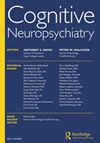短暂的悲伤情绪、同时发生的生产行为和全球功能结果的关联:一项针对双相情感障碍患者的30天生态瞬时评估研究
IF 0.9
4区 医学
Q3 PSYCHIATRY
引用次数: 3
摘要
背景先前每周抽样研究发现,持续的悲伤情绪与双相情感障碍有关。然而,这些数据是回顾性收集的。我们在一项生态瞬时评估(EMA)研究中检查了活动的瞬时质量(生产性、非生产性和被动娱乐),并在每次调查中检查了与瞬时活动质量和整体日常功能相关的悲伤。方法91例双相情感障碍患者,每天3次,共30天。每项调查都询问了参与者他们在哪里,和谁在一起,他们在做什么,以及他们的情绪状态。活动的特征是根据预先确定的标准,并与短暂的悲伤有关。观察者对日常功能的评分与日常悲伤和活动的报告有关。结果悲伤与活动质量相关。短暂的非生产性活动报告与最悲伤相关(p < 0.001),其次是被动娱乐和生产性活动。短暂的悲伤和短暂的非生产性活动与观察者对工作能力、日常活动和社会结果的评价相关(p < 0.001)。使用这两种预测因子得出了最佳模型。本研究对双相情感障碍患者的悲伤情绪过程进行了研究,发现短暂的悲伤与并发活动的质量相关,并且悲伤和日常活动的质量都预测了观察者对日常功能的评分。虽然我们无法确定因果关系,但这些发现支持了这样一个假设,即短暂的悲伤会导致生产性活动减少和日常功能受损。本文章由计算机程序翻译,如有差异,请以英文原文为准。
The association of momentary sad moods, concurrent productive behaviour, and global functional outcomes: a 30-day ecological momentary assessment study of people with bipolar illness
ABSTRACT Background Previous weekly sampling studies found that persistent sad moods are associated with disability in bipolar illness. However, those data were collected retrospectively. We examined the momentary quality of activities (productive, unproductive, and passive recreation) in an ecological momentary assessment (EMA) study and related sadness at each survey to quality of momentary activities and overall everyday functioning. Methods Participants with bipolar illness (N = 91) were sampled three times per day for 30 days. Each survey queried participants as to where they were, with whom, what they were doing, and their mood state. Activities were characterised according to predetermined criteria and related to momentary sadness. Observer ratings of everyday functioning were related to daily reports of sadness and activities. Results Sadness was associated with the quality of activities. Momentary reports of unproductive activities were associated with the most sadness (p < .001), followed by passive recreation, and productive activities. Momentary sadness and momentary unproductive activities correlated with observer ratings of competence in work, everyday activities, and social outcomes (p < .001). Using both predictors led to the best model. Conclusions This study on the course of sad moods in people with bipolar illness to EMA found that momentary sadness correlatesdwith the quality of concurrent activities and that both sadness and the quality of everyday activities predicted observer ratings of everyday functioning. Although we cannot determine the causal direction, these findings support the hypothesis that momentary sadness leads to reductions in productive activities and impairments in everyday functioning.
求助全文
通过发布文献求助,成功后即可免费获取论文全文。
去求助
来源期刊

Cognitive Neuropsychiatry
PSYCHIATRY-
CiteScore
3.20
自引率
11.80%
发文量
18
审稿时长
>12 weeks
期刊介绍:
Cognitive Neuropsychiatry (CNP) publishes high quality empirical and theoretical papers in the multi-disciplinary field of cognitive neuropsychiatry. Specifically the journal promotes the study of cognitive processes underlying psychological and behavioural abnormalities, including psychotic symptoms, with and without organic brain disease. Since 1996, CNP has published original papers, short reports, case studies and theoretical and empirical reviews in fields of clinical and cognitive neuropsychiatry, which have a bearing on the understanding of normal cognitive processes. Relevant research from cognitive neuroscience, cognitive neuropsychology and clinical populations will also be considered.
There are no page charges and we are able to offer free color printing where color is necessary.
 求助内容:
求助内容: 应助结果提醒方式:
应助结果提醒方式:


